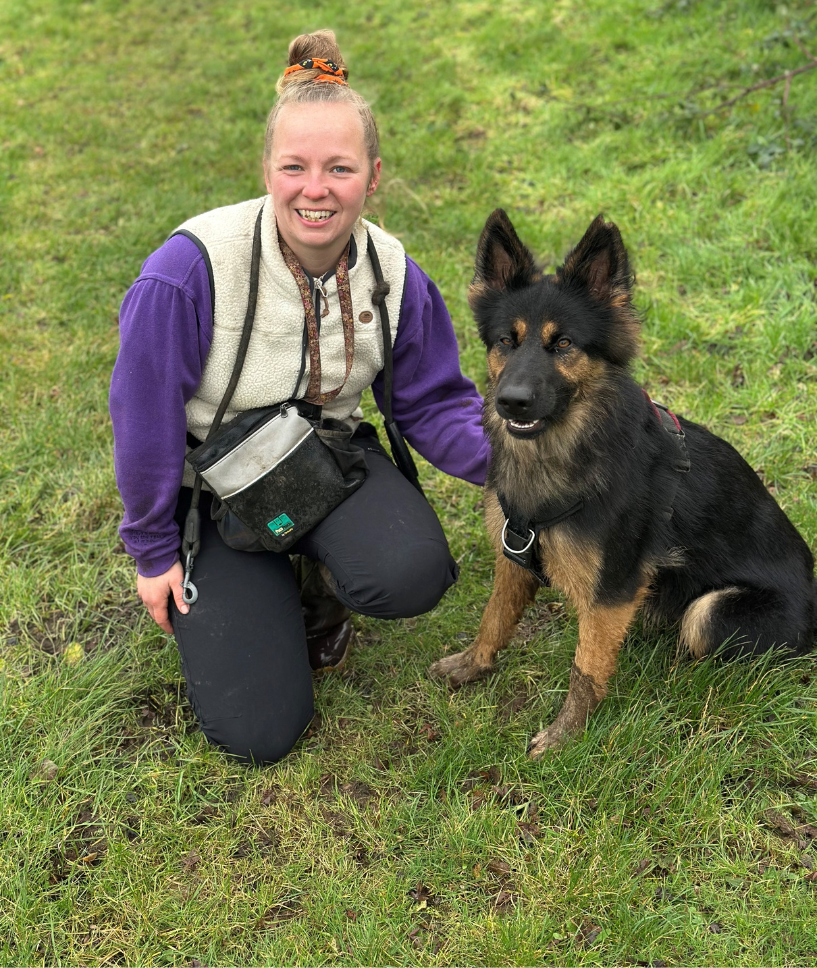How to prevent your dog from escaping a harness
How to prevent your dog from escaping a harness
We recognize how scary it can be when your dog manages to wriggle free. In this blog, we delve into the essential ways to prevent your dog from slipping out of their harness. Dogs have various reasons for attempting to escape their harnesses, and here, we explore possible causes and run through some effective strategies to ensure their safety and welfare, as well as your peace of mind.
Why does my dog try to escape their harness?
Fear
Fear can play a significant role in a dog's response to their environment. Dogs, much like humans, can feel overwhelmed and stressed in certain situations. When fear takes hold or when they feel pressure to be in an environment that they are not comfortable with, their natural instinct is to escape. This reaction often stems from an innate survival mechanism; they instinctively seek freedom from what they perceive as a threat. Understanding this underlying fear and pressure is crucial in addressing their behaviour effectively. By empathetically recognizing their anxieties and creating a secure, comfortable environment by gradual exposure, we can help our dogs to feel at ease and reduce their urge to escape from their harnesses, ensuring both their safety and emotional well-being. Using rewards such as toys and food will also help to make a positive association with specific triggers.
Frustration or Excitement
Excitement can often result in frustration and can trigger a dog's desire to escape from their harnesses in particular environments. Some dogs may find it challenging to contain their excitement in stimulating surroundings if they are unable to reach something they desire, such as other dogs, people, food or anything else of high value. This can result in frustration, and they might attempt to wriggle out of their harness.
This escaping behaviour arises from their overwhelming urge to explore, play, or fulfil their desires. Understanding the potential influence of these emotions is key to comprehending a dog's behaviour. By recognizing the signs of excitement and frustration, dog owners can proactively manage their dog's environment, employ positive reinforcement training techniques, and choose appropriate harnesses that provide both security and comfort. This proactive approach ensures that our companions can navigate exciting and frustrating scenarios without feeling the need to escape, creating a harmonious relationship between dogs and their owners.
How to Prevent your dog escaping their harness:
Lead Handling
By understanding the mechanics of lead handling, dog owners can have a direct impact on protecting their dogs from breaking loose. It is nearly impossible for a dog to wriggle free from a well fitted harness when they are running loose with no lead attached. The key lies in the absence of tension – without lead pulling, there is no leverage for the dog to work against. It is when the lead is taut and the dog encounters resistance that they can reverse, resulting in the harness coming off over the head.
Dog owners play a crucial role in this scenario. In the event that your dog becomes startled or panics and begins to reverse from the harness, removing the tension, slackening the lead and moving with the dog in their direction can effectively eliminate the tension that facilitates escaping behaviours. (A longer lead will help with this). This simple adjustment in handling can be a game changer, ensuring both the dog’s safety and the owner’s peace of mind during walks. So, the next time you’re out with your canine companion, remember, it’s not just about the gear; it’s about the way you use it that truly makes the difference.
Understanding Your Dogs Needs
Understanding your dog’s emotional needs and limits is essential in creating a safe and comfortable environment for them. Dogs, like humans, have their unique personalities and sensitivities. Some may thrive in bustling social settings, while others might find such environments overwhelming. By actively observing your dog’s body language and reactions, you can decipher what they can and can’t cope with emotionally. Recognising subtle signs of stress such as lowered ears, lowered body, tucked tails, wide eyes, or excessive panting enables you to tailor their experiences.
It's about being mindful of your dog’s responses and respecting their boundaries. If your dog seems uneasy around lots of dogs or in busy places, its crucial to protect them by limiting their exposure to such situations so that you can work through gradual exposure positively until your dog shows more signs of relaxation. By doing so, you not only prevent undue stress but also strengthen the bond of trust between you and your dog. A dog that feels understood and protected is more likely to thrive emotionally, making for a more well-rounded dog, and a trusting bond between human and dog.
Safe Equipment
A well fitted harness will make all the difference and it can be the key to keeping your Houdini dog safe. The modular design of the PerfectFit Harness allows for a customised fit tailored specifically to a dog’s size and shape, regardless of breed and age, significantly reducing the risk of escaping incidents.
When you pair the PerfectFit Harness with a double ended Training Lead, attached to the front & back of the harness, you will be able to have 2 points of attachment. This configuration offers an extra level of safety, enabling you to gently put the brakes on or re steer your dog, when necessary, without causing any discomfort. Investing in a PerfectFit Harness and pairing with a double ended lead isn’t just for convenience; it’s a commitment to your dog’s health, comfort and safety, as well as your peace of mind.
You can size your dog up for a PerfectFit Harness by using our Sizing Calculator, after you have measured the widest part of your dog’s rib cage.





